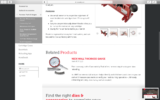CBH Australia
AH legend
- Joined
- Feb 10, 2019
- Messages
- 3,518
- Reaction score
- 7,376
- Location
- NSW Australia
- Media
- 18
- Member of
- Sporting Shooters Association Australia, Africa Hunting website!!!
- Hunted
- Australia and now South Africa
I’ve been reloading for years, I know the basics. I don’t want o be weighing cases and turning necks, not yet at least.
I try use quality pills and get decent groups for the rifle , mostly hunting rifles standard weight factory barrels etc. under 1moa is a start.
Of late I’ve been reading more and there are differing opinions but that’s aside anyone have any tips?
I bought a Lee collet die, a micrometer seater out of interest. I have a .308 that I want to use for practice and cheap shooting to burn up a heaps of Zmax168 gun projectiles on hand.
What has me curios is measuring concentricity. I’ve seen the guages and heard that the Forster Co-Ax Press loads rounds with better concentricity as the dies can float laterally.
What do you do if you found the ammo is not concentric? Can you straighten it?
I’m. Not going down that line but I will be building a rifle and trying to get the best I can from it. I Want a hunting rifle that is a tack driver .
Any tips for loading good hunting ammo?
I would like to hear from
@bruce moulds and @Bob Nelson 35Whelen and others
I try use quality pills and get decent groups for the rifle , mostly hunting rifles standard weight factory barrels etc. under 1moa is a start.
Of late I’ve been reading more and there are differing opinions but that’s aside anyone have any tips?
I bought a Lee collet die, a micrometer seater out of interest. I have a .308 that I want to use for practice and cheap shooting to burn up a heaps of Zmax168 gun projectiles on hand.
What has me curios is measuring concentricity. I’ve seen the guages and heard that the Forster Co-Ax Press loads rounds with better concentricity as the dies can float laterally.
What do you do if you found the ammo is not concentric? Can you straighten it?
I’m. Not going down that line but I will be building a rifle and trying to get the best I can from it. I Want a hunting rifle that is a tack driver .
Any tips for loading good hunting ammo?
I would like to hear from
@bruce moulds and @Bob Nelson 35Whelen and others



